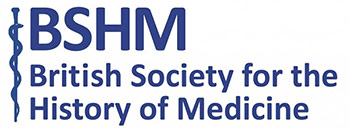Anyone who has read doctor-turned-comedian Adam Kay’s best-selling ‘This Is Going to Hurt’ about his experiences on the obstetrics wards will be aware that medicine provides rich pickings for humour and satire.
But Kay is not the first person to draw on medical experiences to amuse his audiences. For as long as modern medicine has existed, medics and patients have been finding the humour in their experiences, helping to inform on attitudes and experiences from that time.
One such example is this excerpt from the October 1869 magazine, Punch. Written by Francis Cowley Burnand, a nineteenth century comic writer and playwright whose popular column ‘Happy Thoughts’ describes the difficulties and distractions of everyday life.
- Image courtesy of Peter Burke
- Image courtesy of Wellcome Library
- Image Courtesy of Wellcome Library
In this excerpt, Burnand turns his attentions to the doctor’s waiting room, in a scenario that will be very familiar to anyone who has ever made an appointment to see their General Practitioner. The narrator’s attempts to catch the doctor’s eye and jump to the front of the queue are ultimately dashed and he is forced to wait his turn like everyone else. The incident ends in embarrassment when he misplaces the doctor’s fee inside the lining of his coat.
The gentle observational humour illustrated in this column gives insight into the type of medical treatment available to the upper classes, while also demonstrating how little doctor’s waiting rooms have changed in the last 150 years.
The working relationship between doctors and nurses is also very neatly satirised in the following engraving from 1891. The Doctor asks the Nurse: “How is the patient this morning?” To which she replies, “Well – he has been wandering a good deal in his mind. Early this morning I heard him say ‘What an old woman that doctor is!’ – and I think that was about the last really rational remark he made.”‘
This comedic interchange about a delirious patient could just have easily occurred on one of today’s NHS medical wards.
As well as providing entertainment, humour and satire have also been used to highlight public health and social issues. In the following satirical cartoon from an 1893 issue off Punch, ‘Mr Punch’ remonstrates with a policeman about a quack doctor selling his ‘remedies’ on the streets of London. Saying, ‘And if Punch’s ready bâton lays its thwacks on any back with special zest, it is on charlatans and quacks.’
The cartoon highlights the movement against quackery towards the end of the nineteenth century, with a higher degree of ‘outcry’ against quacks that promoted false and unproven health claims for financial gain. While we are less likely to see ‘cure-alls’ pedalled on street corners, ‘quackery’ in the form of misinformation regarding vaccination and cancer treatments still exists as a scourge in modern medicine.
Flora Malein
The October 1869 Happy Thoughts article in full:

Image courtesy of Peter Burke
Sources used:
Chisholm, Hugh, ed. (1911). “Burnand, Sir Francis Cowley” . Encyclopædia Britannica. 4 (11th ed.). Cambridge University Press. p. 848.
The Wellcome Library



